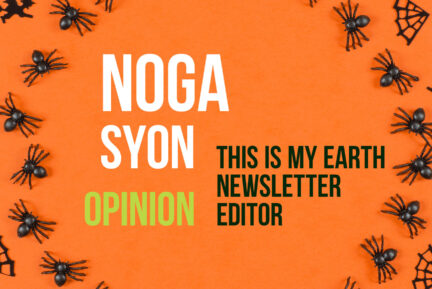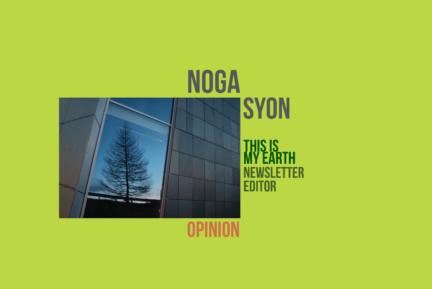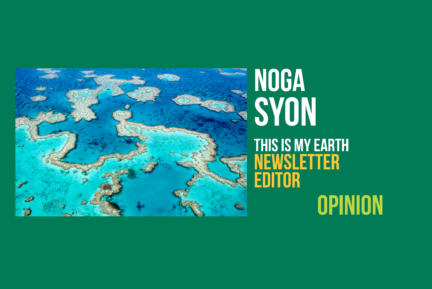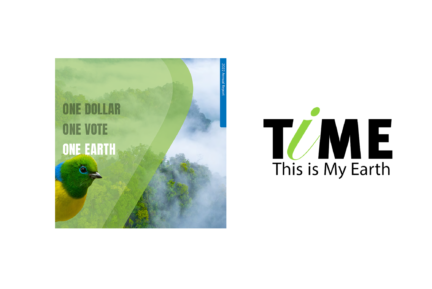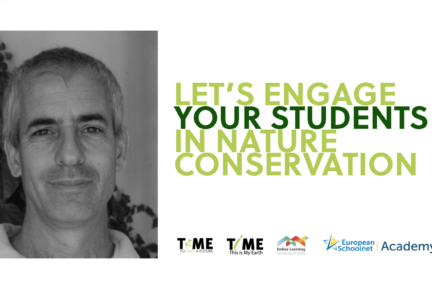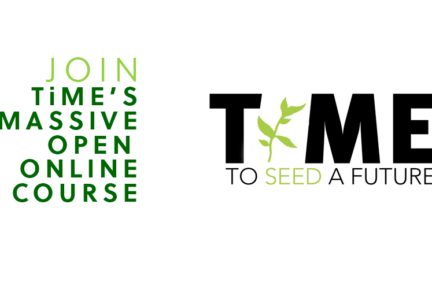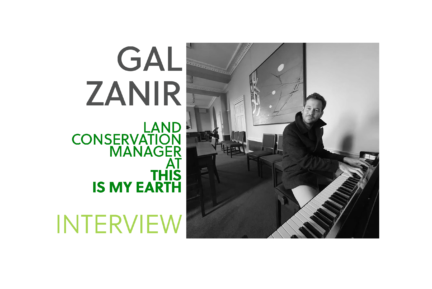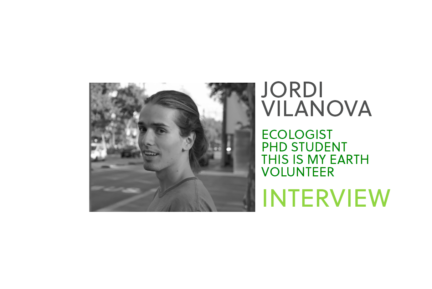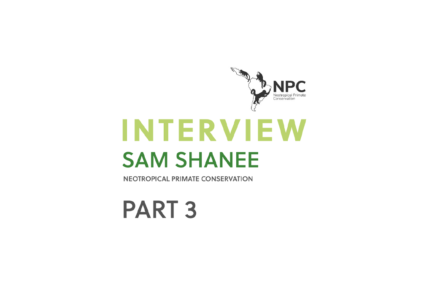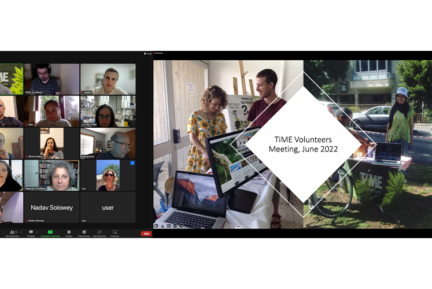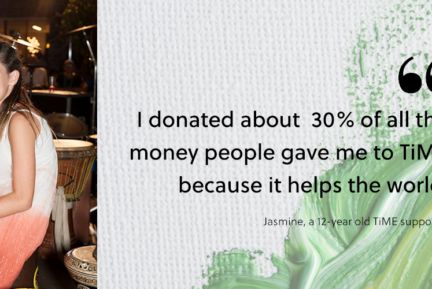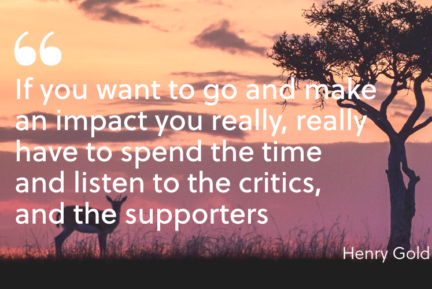There’s a bright future ahead if we want to work for it, says the Director of the Planetary Health Alliance, based at the Harvard University. We had the privilege to speak to Samuel Myers about climate change, conservation and human health.

How would you introduce yourself?
My name is Samuel Myers. I’m a principal research scientist at the Department of Environmental Health of Harvard University and the Director of the Planetary Health Alliance.
Can you share a particular moment of revelation regarding nature stewardship?
I’ve felt very connected to nature since I was very young. In my childhood, I felt that connection in powerful moments. However, in retrospect, it’s hard to know exactly what words to put to those feelings, but perhaps the closest word is a sense of reverence, a strong spiritual connection to something bigger than yourself. I’ve always felt this background feeling. But intellectually, I’m very interested in the relationship between the state of the natural world and human beings and our well-being. From a scientific point of view, you could trace those connections to psychological phenomena.
Has your career been affected by this quest?
My career has been trying to find a path to explore the connections between nature and human health and well-being. A series of experiences as a child made me choose this path. I used to go to this place in Cape Cod – a long terminal moraine off the coast of Massachusetts.
I used to spend time with my family in the summers and would spend many hours reading a book under an oak tree that I found magical. It hung almost down to the ground, and in summer, all this grass was growing.
And nobody else ever went to this particular spot, so it was my special spot, and when I was inside that space reading my book, nobody could reach me, and it was my magical place.
I also spent much time in the White Mountains in New Hampshire as a kid with my family. I remember sitting by streams and listening to the sound of water — listening intently to the water and feeling transported outside of myself into something much bigger.
These experiences with nature allowed me to feel these expansions and the sense of whom I was and dissolving my boundaries.

Is that what Planetary health is about?
Planetary health is about many things. It acknowledges that many people have an emotional and spiritual connection to the natural world, and extraordinary diversities exist.
There are faith traditions that talk about this connection, there are Indigenous knowledge systems that put that very much in the center, there are stories, there are myths, and there are lots of ways to engage with that natural world.
Still, the beating heart of the planetary-health field is scientific. Planetary health is a discipline and an effort to quantify and characterize the human-health impact of our transformation of natural systems.
At the heart of Planetary health, an epistemological science connects the dots between anthropogenic and environmental change, such as biodiversity loss, land-use change, or air and water pollution. We analyze how human activity transforms nature and then ask how this transformation is returning to our health and well-being. We believe there’s a bright future ahead if we want to work for it.
Is Planetary health the science in charge of scaling the ongoing Earth crisis?
In a way, it is. Because calling it an environmental problem is not accurate. The Earth crisis is now driving a global health and humanitarian crisis. We try to explain nature loss for humans in rigorous evidence-based terms.
And around that, there is a growing movement that engages other communities such as Indigenous peoples, artists, humanitarian volunteers, and youth leaders… For many people, Planetary health shows the disruption of natural systems and human health, and is consistent with their intuition.
Because of course, we are all connected to natural systems, so it’s not surprising that we all depend on those systems for our health and well-being.
You often say that climate change will bring lots of surprises. One was related to the increase in carbon emissions and the decline of nutrients [in edible plants]. How would you explain that?
It’s essential to be accurate when we talk about climate change. People tend to put all of the anthropogenic environmental change into a basket called climate change. But climate change is only one of the ways that we are transforming nature, as This is My Earth knows very well.
When discussing Planetary health, I’m not only speaking about climate change. It’s the transformation of all these natural systems that are essentially alternating almost all the biophysical conditions on the planet. Those changes interact in complex ways we don’t fully understand, but they affect the core foundation of human well-being.
The food we eat, the air we breathe, the spread of infectious diseases, and so on. The research you’ve described isn’t a climate-change phenomenon but a CO2 phenomenon.
It is a direct effect of the increased concentration of carbon dioxide in the atmosphere on the plants, which leads to reduced levels of nutrients, such as iron and protein.
We’ve shown and published that in Nature in 2014 (see full article: Increasing CO2 threatens human nutrition), and then we’ve spent several years modeling how those changes in nutrient content affect staple foods that we depend on.
We’ve found that about 200 million people are at risk of micronutrient deficiency due to the CO2-mediated shift. That is in addition to the one billion people on the planet that are already experiencing those deficiencies.

Was that surprising?
Unfortunately, this is an excellent example of a surprising finding. And there are many more. But it is also intuitive. If you and I were sitting around 20 years ago chatting about how adding carbon dioxide to the atmosphere may affect our health, we could have come up with many ideas about climate change and sea-level rise.
But probably, we would not have come up with “our food is going to become less nutritious.”
What is the metaphor of the monkey and the rocket ship you often use?
This rocket ship is moving across space, and we are all passengers at the back. Along the journey, the monkey moves up to the cockpit and starts pushing buttons and turning knobs.
That is precisely what we are doing now—we are determining our planet’s biophysical conditions with little understanding of how the changes we are driving will impact ourselves or the rest of life on Earth.
Can you give us an example of how these changes might impact us?
We are seeing women in Bangladesh experiencing eclampsia and preeclampsia in pregnancy at much higher rates than before. It turns out that the combination of sea-level rise, more extreme weather events, and poor management of water resources is leading to seawater infiltration into the coastal aquifers, so salinity levels are rising.
Ingesting more salt leads to eclampsia in pregnant women, as well as higher levels of blood pressure. Twenty years ago, we would not have said climate change would raise eclampsia levels in women, and yet here we are.
Yours is the sentence, “If you think about who is responsible for rising CO2 levels and who will experience nutritional deficiencies, as a result, the populations are almost mirror images of each other”.
This quote refers to equity and justice, core principles in Planetary health. It comes from a statistical analysis that we wrote and published looking at the populations experiencing micronutrient deficiencies because their food is becoming less nutritious, due to the rising levels of CO2.
Then we looked at who are the people responsible for emitting the carbon dioxide, and they were mirror-image populations. That shows how the people who benefit from the activities that are transforming natural systems (consumption patterns, use of fossil fuels, timber…) are pretty different from those who are bearing the burden of their consequences.
The poorest people in the world are more affected, also future generations and non-human beings. There is an important moral dimension to this. It is profoundly unfair that the wealthiest people in the world are putting the poorest people and future generations in harm’s way.

What about nature conservation?
The devil is always in the detail. There are examples of land conservation that can also be deeply unfair. If you take away lands from Indigenous peoples and don’t allow them to use them in ways they’ve always used them, you can create significant hardship.
Conservation is also finding ways to address the needs of local people, allowing them to protect themselves and take care of themselves. There are lots of models on how that can work well. But certainly, protecting natural landscapes can be beneficial for our life support systems.
How do you see new generations facing climate change?
First of all, it is a fact that youth will be more impacted by climate change. Second, there are many mental-health risks for youth worldwide. The scale and pace that we are transforming nature are unprecedented.
Eco-anxiety or ecological grief will be more prevalent among young people. The way we live, the wealthiest, is undoubtedly very selfish. Young people feel guilty. Some choose not to have children, partly due to this hopelessness and insecurity.
On the flip side, I feel a lot of anger among younger people. Some of them are getting mobilized to address the need for action. Movements like Fridays for Future and many other young activists are examples of that. That is very positive and exciting.

How do you support these young networks at the Planetary Health Alliance?
We have ambassadors on campuses worldwide, and we are bringing them together regionally in campaigns that strengthen movement-building and engagement. From a mental-health standpoint, it is exciting to bring people together and allow them to participate in positive campaigns. Just like you are doing at This is My Earth.
What is your communication approach at the Planetary Health Alliance?
We have a video that encapsulates the narrative of what we think is worthy of communicating. We send out monthly newsletters, have social media channels, and give talks worldwide.
We also organize a Planetary Health Annual Meeting every 18 months or so—the next one will be in Malaysia in April 2024. We want to help people understand the historical moment we are living in and how the current trajectory that we are on is essentially mortgaging the future for whatever we can reap at present, and what’s at stake if we don’t shift.
There is a bright future we can imagine. In 100 years, we all can be part of a successful story.
How will we succeed?
Our Planetary Health Alliance textbook is trying to answer that question. The second half of this book goes in this direction. There’s an immense landscape of possible solutions, from energy systems to food systems, precision agriculture, manufacturing, [the] circular economy… We can change our trajectory; perhaps the question is, will we?

It sounds like you need a lot of political will for that.
Indeed. We need to engage policymakers in our struggle, and we need to integrate Planetary health all around the world. The world is waking up. There is a bright future ahead if we want to work for it.
What do you think about This is My Earth’s model?
Crowdsourcing is a great model. It creates engagement and awareness online. I would like to know more about how the community is growing. If someone in Brazil gives money, someone in the Netherlands gives money, and then someone in the US… that is excellent — it’s collective action. It is a way to come together. I also see you successfully saved several lands, which is good news.

